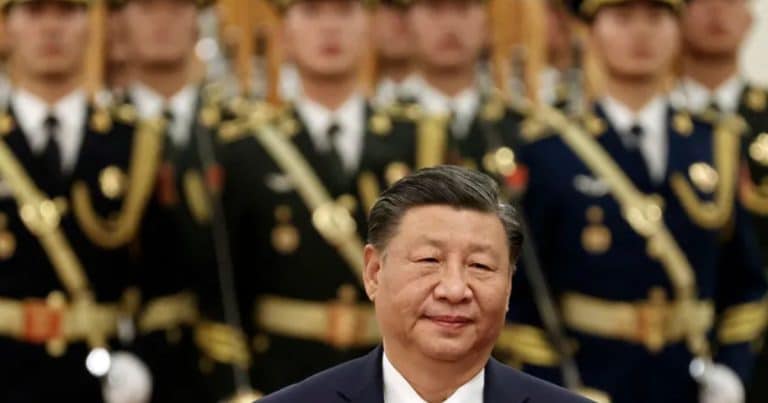
As federal authorities investigate a deadly New Year’s terrorist attack in New Orleans, national security experts are sounding increasingly urgent alarms about America’s vulnerability to both domestic and foreign threats. The FBI’s investigation into the Bourbon Street attack, which left ten people dead and many more injured, has revealed disturbing connections to broader security concerns facing our nation.
“At times we are sitting ducks,” warned a former FBI special agent in response to the New Orleans attack. This highlights how unprepared many American cities remain despite decades of security investments. The incident, which authorities say was perpetrated by an individual who entered through Eagle Pass, Texas, underscores the interconnected nature of border security and domestic safety.
These domestic security challenges come as defense analysts raise red flags about an even more ominous threat developing across the Pacific. One that draws haunting parallels to one of history’s darkest chapters.
China’s Massive Military Build-Up
“China is engaging in an unprecedented military build-up that the world frankly hasn’t seen since Adolf Hitler in the 1930s,” warns Chuck DeVore, a retired Army lieutenant colonel and chief national initiatives officer at the Texas Public Policy Foundation. His assessment, based on the Department of Defense’s 2024 report to Congress, suggests that while America invested $5.4 trillion in counterterrorism operations, China has been methodically building a military machine that could soon eclipse U.S. capabilities.
The Pentagon’s comprehensive 182-page assessment paints a sobering picture of China’s rapidly expanding arsenal. Indeed, the Chinese military now possesses more than 600 operational nuclear warheads. This number is expected to surge past 1,000 by 2030. Their navy, already the world’s largest by vessel count, is projected to grow from 370 ships to 435 in that timeframe.
“The Chinese Navy, not by tonnage, but by numbers is now larger than the U.S. Navy,” DeVore emphasized. “China has something like 250 times the ship building capacity that America does.”
This naval disparity represents a direct challenge to America’s traditional maritime dominance. This dominance has been a cornerstone of global security since World War II.
Perhaps most concerning is China’s development of what military analysts call “cognitive domain operations” (CDO). This is a sophisticated blend of psychological warfare and modern technology designed to achieve what the People’s Liberation Army terms “mind dominance.” This strategy incorporates artificial intelligence, big data, and neuroscience to influence public opinion and decision-making in target nations.
The Pentagon report reveals that China’s psychological warfare capabilities are specifically designed to “deter U.S. or third-party entry into a potential conflict.” They’re also meant to create an environment favorable to Chinese interests by reducing civilian and military resistance to their actions.
America’s Global Leadership Challenges
These developments come as America faces increasing challenges to its global leadership role. Critics argue that current defense spending priorities have left critical gaps in our strategic deterrence capabilities. Many of the gaps are in naval power projection and missile defense systems.
The stark warning draws particular attention to China’s hypersonic missile capabilities. This includes the DF-27 missile system, which can potentially evade U.S. missile defenses and target American territories, including Guam, Hawaii, and Alaska. This technological advancement represents a direct threat to U.S. sovereign territory – a vulnerability that demands immediate attention.
As America faces this mounting challenge, security experts emphasize that the response must be comprehensive and decisive. The lessons of history suggest that hesitation in the face of aggressive military expansion only invites further provocations. The parallels to the 1930s serve not just as a warning but as a call to action for American leadership to respond with the same resolve that previous generations showed in defending freedom and democracy.
The choice facing America is clear: either restore our military deterrence through strategic investments and strong leadership or risk watching our nation’s security erode in the face of unprecedented challenges. As history has shown, the cost of preparedness, though significant, pales in comparison to the price of weakness.
Key Takeaways:
- China’s nuclear arsenal will exceed 1,000 warheads by 2030, threatening America’s strategic deterrence.
- Chinese Navy now surpasses U.S. fleet size with 250 times the shipbuilding capacity.
- Pentagon reveals China’s “mind dominance” warfare strategy targeting American decision-making.
- Expert warns: Current military spending priorities leave America vulnerable to Chinese expansion.
Sources: Fox News, Head Topics